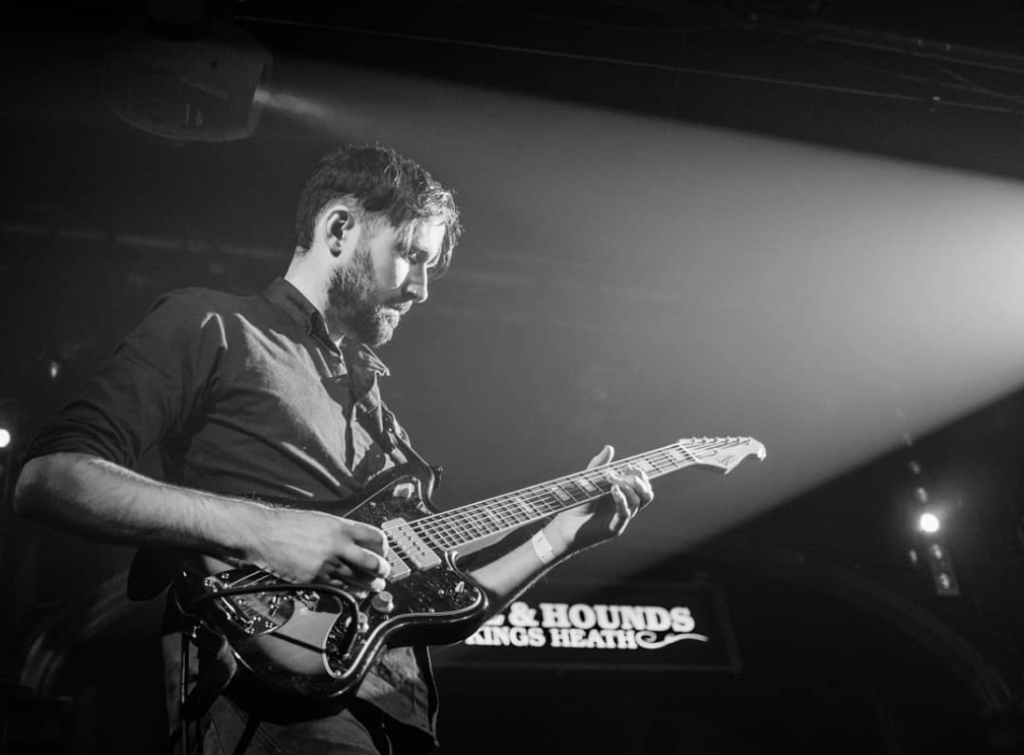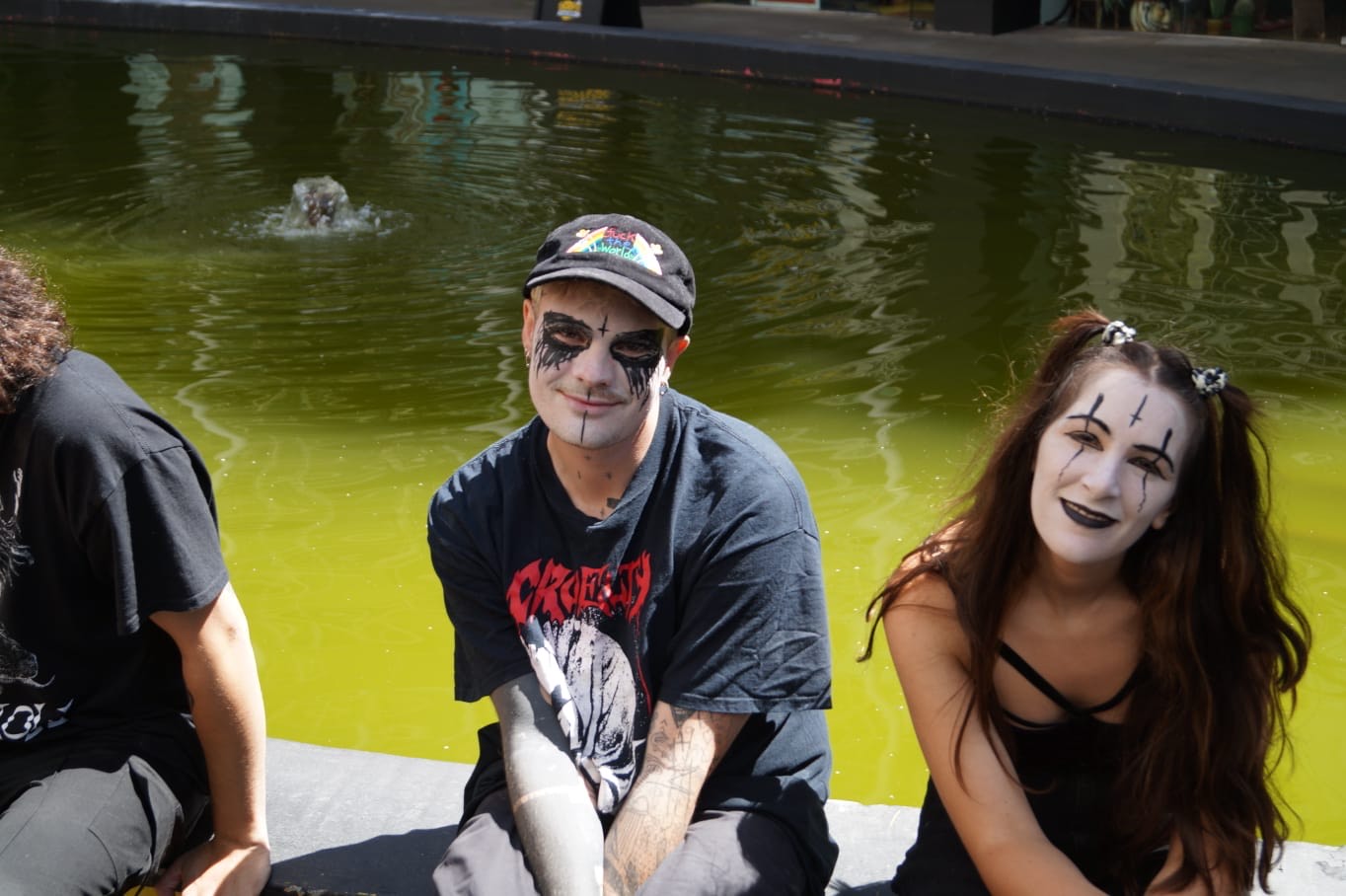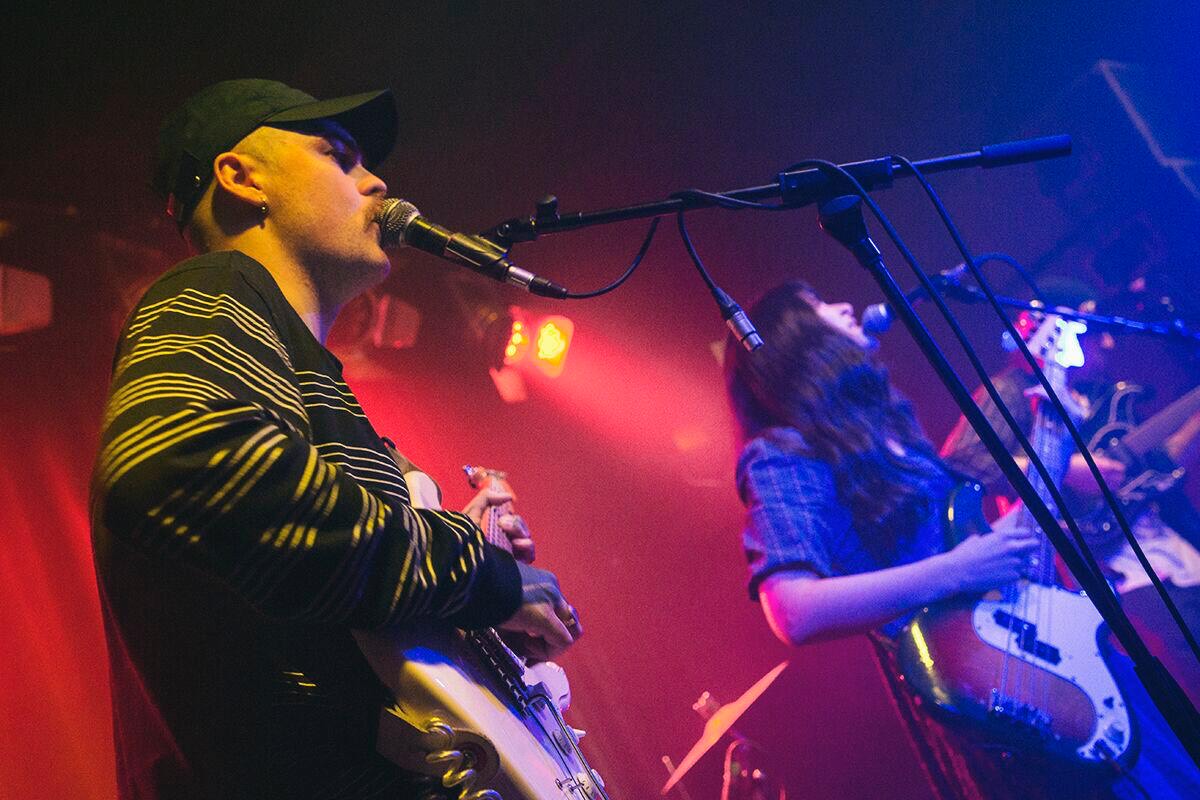Here again to fill the blog-shaped hole in your heart, today on Strings ‘n Things the fidelity is lo but the bar is hi- it’s the sumptuous sounds of Sofa King
As a straight, white, male in a band in Birmingham, UK, I think that it is safe to say that there are plenty of straight, white, male bands from Birmingham, UK. Which is also to say that as a whole, our indie scene is pretty cis male heavy. I do not mean that as a slight against the aforementioned groups, but let’s not pretend that it’s a well-rounded gaggle of rockers. But things have been changing- slowly and surely. From the likes of Grl Gang Brum and Brum Girl Skate providing platforms for girls and other marginalised genders in cultural communities where they have been otherwise under or even misrepresented, or the efforts of promoters such as This Is Tmrw, Supersonic and Kaleidoscope to host more gender-balanced line-ups, it feels like the days of Birmingham’s music scene being a boys’ club may, fingers crossed, be numbered. But smashing patriarchy is one thing- making art that stands on its own feet regardless is another. With Sofa King, Dianne heavily blurs the lines between her art and her own existence- they have a symbiotic relationship, as does that of the best artists and their work. Her discography does not sound exclusively contemporary- there’s a heavy hypnagogic pop influence, and a retro futurism that could have you mistakenly believing you’d stumbled upon some forgotten gem of the mid 2000’s Paw Tracks roster, or some Todd Rundgren deep cuts. It almost feels underwhelming to get the skinny on her guitar equipment- throughout her work it’s the gorgeous, modulating synths and kitschy keyboards that take the centre stage- with latest release Don’t Let the Capitalists Win calling to mind the lo-fi musings of Grouper and Panda Bear, but with a heavy dose of existential dread in mix. It’s the kind of work that makes you ask “who is this individual and what the hell is going on in there?”- which is exactly what our fair city needs in the golden era of Foals-lite festival fodder. So see this more as a chronicle of Dianne’s humble beginnings rather than a deep dive into her djentiverse- and then go drink up her discography with untethered thirst.
Talk us through your guitar history from your first to your most recent.
“My very first guitar was some kind of nylon string acoustic, I was so young at the time I definitely had no idea what I was doing so just ran round the house hitting out of tune strings until I lost it somehow (or confiscated, but I’ll say ‘lost’ as it’s nicer). Then I started playing drums and decided to become a rhythm section, baby, and begged my parents for a bass- which is probably why I feel like bass is my spiritual home. Then a series of basses followed, culminating in a Japanese Fender Precision from the 90’s (now sold) and a Japanese Mustang which was originally white but is now sort of an orange/red colour, as well as a custom-built bass with a humbucker. In terms of six-strings, I returned to the nylon acoustic, and then my teenage desire to make noise drew me to an Epiphone SG and then a Fender Strat (white on white, baby) both of which I still have. There are others, but the one that I let go and miss most is a Westone, which was just the loveliest lil’ shredder I ever did use.”
Who inspired you to pick up guitar, and who inspires you to keep on playing today?
“My Dad introduced me to The Clash, which is a very Dad thing to do, like falling asleep in front of football or mowing the lawn. They’re the band that I most closely associate with early memories of wanting to play the guitar specifically. Rinsing London Calling over and over, and thinking how cool Paul Simonon looked on the artwork, I think that’s where it all started, but then childhood memories are hard for me to grasp onto.
In terms of continued inspiration, a handful of modern artists are important to me when it comes to pushing guitar into new territories of sound and its role in songwriting. Cate Le Bon and Aldous Harding are in there for their use of tones and melodies specifically inherent to guitars, whilst other influences like Connan Mockasin and Kirin J. Callinan take guitars and bring in new textures and sounds to turn them into something they’re not- without it becoming a gimmick.”
Tell us about your music, and how you approach your guitar playing within the context of it.
“I don’t even know what to say about my music anymore- it’s sort of a desire to push out in all directions at once. I guess what I’ve put out there generally falls into to that dreampop/synthpop area, with a gothic bent bringing the danger, and with a tendency to favour rhythms over melody. Guitar has usually occupied a textural space- very rarely being at the forefront of anything. Sometimes it hits that link between harmony and rhythm- like a bass in the upper registers. I think my approach is less ‘melodies and riffs’, and more ‘harmonies and rhythms’.”
What setup are you currently running, amp and pedal wise?
“I tend not to use amps outside of a live situation! I like the sound of DI’d guitar best- it feels more honest, plus there’s always the option of running it back through an amp always being there if I need it. On those rare occasions where I am on stage playing guitar, I run stereo into a Fender Vaporizer and a Roland JC-40 (or, if I’m being lazy, just stereo into the Roland). Pedals are a whole lot more important! The chain currently runs:
Boss TU-3 > Boss PS-6 > Danelectro Cool Cat Metal > Digitech Digiverb > Rat clone > Boss PH-3 > Boss DD-7 > Earthquaker Devices Rainbow Machine > Electro Harmonix Neo Clone, and a compressor sometimes if I feel like adding a pedal that doesn’t do anything at all.”
What’s the one pedal that you couldn’t live without?
“The Neo Clone from my current setup, it just adds nice texture and can do a whole lot with just a knob and a switch.”

What’s your current main guitar, and why so?
“Probably the five dollar nylon string guitar I found in an op-shop in Warrandyte- you can’t play any higher than the 8th fret but it sounds real nice. It’s easier to pick up and pick out chords and intervals that I like. I need immediacy because I will balk at the slightest sign of a hurdle.”
Are there any other local guitarists you particularly admire?
“Rose Davies fucking shreds, I feel very blessed that she has been playing with Sofa King, far too talented to be wasting time with my dinky little tunes. Matt Jenkins (Tremorsz) is tight as hell- he always seems to know exactly what he wants out of a setup. Thom Edward (God Damn) knows exactly what heavy means, more deeply than anyone I know. And you gotta give it up for Scott Abbott (Table Scraps), dude built a Flying V -Strat, crazy bastard.”
If you could play any venue anywhere in the world tomorrow, where would it be and why?
“The Tote Hotel in Melbourne because people are actually allowed to go to shows in Australia! Fuck our government. Fuck Boris.”
Where can we find your music?
“It’s all available for free on my bandcamp, and then the usual Spotify, Apple Music, etc. Trying to figure out if I can get it off of Amazon Music.”





















